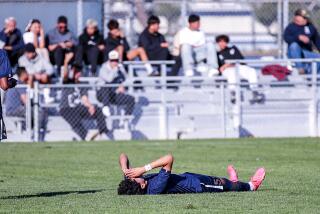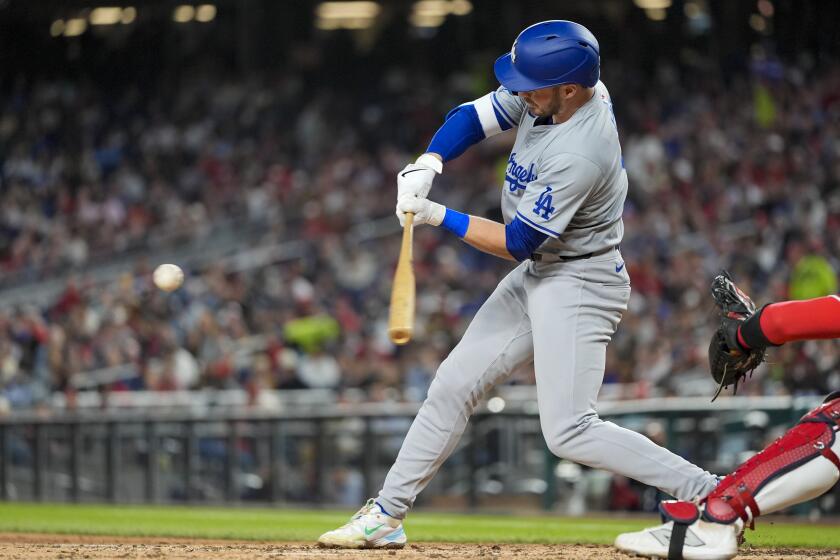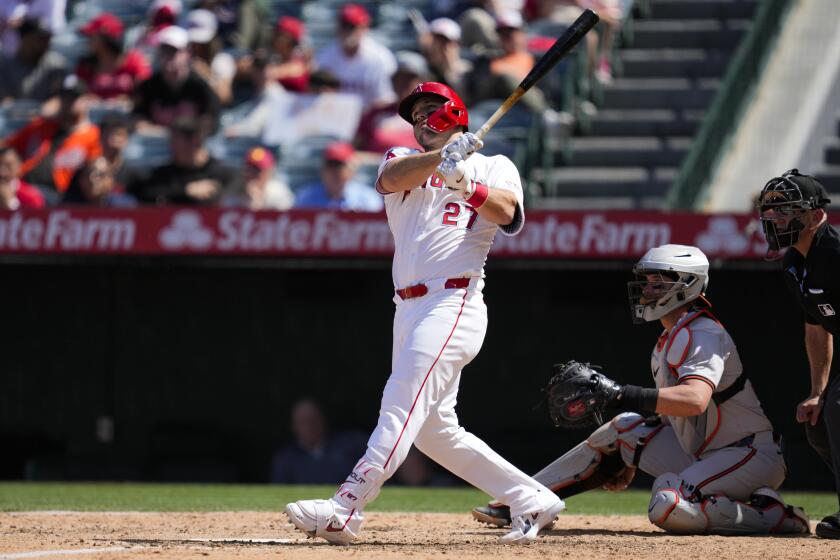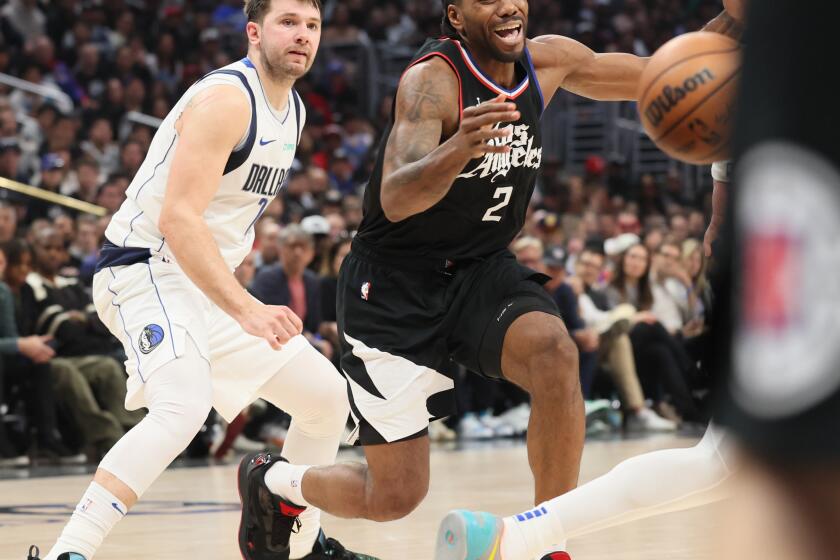The Philosophy of Passing
Longtime writer Bob Oates shares his commentary on the NFL.
Known as the dean of American pro football writers, Bob Oates has been long known as a strong advocate of pass offense, the subject of this two-part series. The second part follows.
The significant advantages of passing over running have been demonstrated repeatedly — by some teams — in the years since the 1980s coach of the San Francisco 49ers, Bill Walsh, cranked up his West Coast offense. It was Walsh who first found that a pass offense, properly organized and supervised, can be as safe as a running-play offense and more effective. That finally convinced some, at least, of the numerous football coaches who had been overrating interceptions and sacks.
For a while, St. Louis Coach Mike Martz and others, emulating Walsh, threw the ball more aggressively than most of their peers and predecessors. But in recent years, it has been New England Coach Bill Belichick showing the way.
In yesterday’s column, two advantages of passing were outlined:
First, in the game-opening race for the lead (which can sometimes last most of the first half), passing decisively beats running.
Second, passing teams are superior in a companion offensive challenge — the science of coming from behind.
In today’s chapter, the focus is on some of the other reasons why football is most artistically and most successfully played by passing teams.
Nullifying Emotion
It isn’t emotion but talent that prevails on pass plays. This contradicts an earlier NFL holding that the emotional factor ranks as about one-third of football — along with talent and intelligence.
Vince Lombardi and other 20th century coaches regularly maintained that playing hard is as helpful as playing properly. By contrast, today, passing enthusiasts don’t consider emotion to be a key.
They point out that pass-offense players specialize in hand-eye coordination and intellectual acuity. Thus — by comparison with running-play players — passers and receivers can be successful regardless of their emotional state. They have recurrently shown they can make yards and points and winning plays against even the best defensive players who are psychologically charged up.
The decisive elements in effective pass offense are timing, recognition of defensive patterns, mental adjustments on the fly, and the ability to perform refined physical skills under pressure. None of this requires excess emotion.
On carefully rehearsed, closely timed passes, the game’s many gifted receivers and passers simply bypass the hordes of eager, revved-up defensive players. What this means is that a sound passing team can continue to play well through the long season despite every team’s inevitable peaks and valleys emotionally.
Brawn vs. Brains
Running teams carry a competitive burden that decreases their chances to succeed on game day — a burden that can be summed up in a phrase: comparative proficiency. Running teams can only count on running against teams they physically outman.
Most running teams (the Pittsburgh Steelers, as an instance, or the Baltimore Ravens) favor straight power football. They run the same handful of plays over and over. Facing them, defensive players know in detail what’s coming.
The only way for such a rushing offense to succeed, most noticeably early in the game when the defense is psyched, or late in a close game when everybody is psyched, is to field superior players — athletes who are bigger, stronger, and better-drilled.
Passing teams, by contrast, can succeed even against better athletes — winning with superior tactics, timing, variety, and the element of surprise.
This relative effectiveness of passing versus running is proved every year when two or three running teams win their way through the regular season — beating up on physically inferior opponents — only to lose playoff games to smarter and more capable teams. In a case example, the bruising Pittsburgh Steelers walloped most opponents last year before New England’s passing team took them apart and down.
The only run-and-play-defense team to win the Super Bowl in more than a decade actually proves the rule. The Baltimore Ravens won that season by injuring, on late, illegal hits, all three quarterbacks they opposed in the playoffs. Only by thus eliminating every passing threat they feared did the Ravens back in, stimulating a new and continuing effort by the NFL to protect its quarterbacks from street violence.
Calling Plays
To running teams, play-calling is not a big issue. Normally, they are prone to run in any down-and-distance situation except third-and-long. And they select from among their handful of running plays almost at random. What’s more, teams that run the stretch play, such as the Indianapolis Colts and the Denver Broncos, often proceed with that same play, left or right, almost every time they run.
To a pass offense, by comparison, play-calling is much more significant. It is, in fact, the most important issue. There are an infinity of fine points, but the ruling maxim is “Take what the defense gives you,” the commandment first articulated more than 30 years ago by Hall of Fame quarterback Johnny Unitas (1956-72) of the Baltimore Colts. This maxim can be restated, on Bill Walsh terms, as “Pass on running downs and run on passing downs.”
On running downs (first-and-10, for example, or third-and-one), an NFL defensive line rarely rushes the passer but instead holds fast at the line of scrimmage against the run. Meanwhile, the linebackers seldom drop quickly into pass coverage but instead lean forward to fill in any holes in the rushing defense. In that situation, the defense is “giving you the pass.”
Offensively, running teams consider running downs ideal for macho, bruiser-type football. They decline the easy way out and, instead, bull their way into the stacked defensive front.
Passing teams in that situation know better. They pass imaginatively and aggressively while the defense lines up to concentrate on the run while hoping to react to the pass.
On typical NFL passing downs (second-and-10, as one instance, or third-and-four), all defensive linemen tend to tee off against the passer while their linebackers are retreating immediately to cover the pass. Now the defense is “giving you the run,” and the smart passing team will often take advantage with dive plays, quick traps, draws and other such counterpunch running plays that slip past attacking defenders preoccupied with the quarterback.
Passing to Run
To have a credible running threat, a good passing team must fully integrate the run and the pass. One way to do this, the traditional way, is to run first and then use play-action (fake run) passing plays. There are two problems with this approach. To begin with, the offense has to run the ball in the early going against a defense set to stop the run. In the race to take the lead, these are often wasted plays. In addition, the offense, when it does pass, is forced to do so using sluggish blocker-types (fullbacks and extra tight ends) as receivers.
The classic modern example of a player who favors the play-action system is Colt quarterback Peyton Manning, who wastes play after play in the early going handing off to a running back, usually Edgerrin James, before unleashing his magnificent passing game.
This strategy succeeds against most regular-season opponents for an obvious reason: Both Manning and his receivers are extraordinarily talented. But in a playoff scenario — against New England, for example — great play-action talent has great difficulties. For example, in last season’s playoff match against the Patriots (not counting a two-minute drill at the end of the first half), Manning handed off to James 11 times out of 14 first downs, gaining a minimal total. And by that time, the game was out of Manning’s reach, 20-3, in the fourth quarter.
This sort of self-inflicted loss is particularly sinful to a team like Indianapolis that throws so superlatively it could pass on virtually every play.
One serious drawback with running to set up the pass is that, on most teams, this means putting a fullback in the game to block a large linebacker at the point of attack. The fullback is ordinarily the least talented football player on the team, an impediment to both the pass and the run.
As a pass receiver, of course, the fullback is a dead loss compared to an extra wide receiver who can get you a touchdown in one play. On running plays, a blocking fullback does pound his linebacker — but even if he gets a good block, that’s two more big bodies clogging up the hole where the runner wants to run.
The truth is, the fullback does his job more helpfully by going to the bench — replaced by a wide receiver — in which case the defense has to take that bulky linebacker out of the middle and replace him with a small defensive back lined up wide. Bigger holes for the running back appear automatically against this thinned-out defensive front.
The other way to integrate runs and passes — a tactic open to passing teams — is to flood the field with wide receivers, throwing at first to loosen the defense, then running from the same formation into the thinned-out defensive front. So doing, the offense can threaten big-play passing to game-breaking personnel on every play, thus opening up easy rushing yards when needed.
From this perspective, the best base formation is one with three wide receivers plus a tight end and a single running back — with no fullback — a formation sometimes called the Ace/Three. The foremost example of the edge gained in this formation was provided by the Buffalo Bills of the late 1980s, who ran the Ace/Three on almost every play for four straight years — going to the Super Bowl in each of those years with less than stellar personnel.
That Buffalo team was the answer to the perennial question, What would happen if they ran the two-minute drill all the time? With Hall of Famer Jim Kelly at quarterback, Buffalo made this reply: We played championship football more consistently over more years than any team in NFL history.
The First-Down War
Most football people overrate third down and the much-publicized “third-down conversion rate”. In reality, the most significant down is first down, which, if handled effectively, can keep an offense from facing many third downs.
As the information above has made plain, the aggressive passing team throws frequently on first down, particularly at the start of a game. There are a couple of reasons for this strategy. First, it keeps the offense from wasting downs running into an emotionally hopped-up running defense. Second, it lets the offense take advantage of the best passing down, first down — the best chance for big plays.
On first down, not only is the defense typically set for the run, but the offense has an almost free opportunity to go for a big play. If there’s an incomplete, the busted play simply leads to second-and 10 — and second-and-10 is not the problem to a passing team that it is to a running team.
If the pass is there, a passing team can on one play gain 10, 25, 40 yards or more (as, in the most recent playoffs, the Patriots twice burned the Steelers in the first half). If the quarterback has to throw the ball away, at least the offense took its best shot when the odds were most in its favor. In the long run, it pays to go for the big play every time the odds are with the offense.
Even if defensive players are set for the pass on first down, it still makes sense to throw it a majority of the time. On first down, the offense can pull out any pass in its arsenal, short, mid-range, or deep, and the defense has no way to guess what is coming (as it does on third-and-seven, say, or third-and-12). On first down, when the defense has to cover short passes and deep ones, from sideline to sideline — and watch for the trap and draw play as well — it is stretched too thin to shut down an efficient passing team.
All of this goes double in scoring territory. No play is easier to execute than a well-conceived first-down pass in the red zone. The defense there is determined to stop the run— it doesn’t want to give up another inch — so after a pass-play drive into the red zone, another pass is almost like stealing. The Dallas Cowboys won one of their Super Bowls in the 1990s by throwing four touchdown passes all on first down.
By third down, to take another red-zone situation, defensive teams gear up to stuff the tiny, ten-yard strip of end zone with zone-defense players, rendering a pass difficult or impossible.
Evolution of Intelligent Design
Football began as a power sport, with big men battling hand to hand in the dirt and mud. It has evolved into a dominantly aerial battle in which the winning teams are those that display the most intelligence, creativity, daring and skill.
For football fans, the advantage is that passing a football is incomparably more intriguing and entertaining than “four yards and a cloud of dust.” This was not lost on former NFL Commissioner Pete Rozelle, who in the 1970s gathered together his associates, including Elias Sports Bureau chief Seymour Siwoff and other department heads, and, as Siwoff recalls, said, “Smash-mouth football will never sell big.”
Accordingly, Rozelle pushed for the first rules eliminating bump-and-run defense — eliminating, that is, defensive holding, shoving and battering pass receivers after the first five yards of any pass play. The new rules — to which the league has rededicated itself under the new commissioner, Paul Tagliabue — have brought in the kind of player, the kind of talent, and the kind of pass-offense design essential to take pro football forward as America’s leading spectator sport.
More to Read
Get our high school sports newsletter
Prep Rally is devoted to the SoCal high school sports experience, bringing you scores, stories and a behind-the-scenes look at what makes prep sports so popular.
You may occasionally receive promotional content from the Los Angeles Times.






